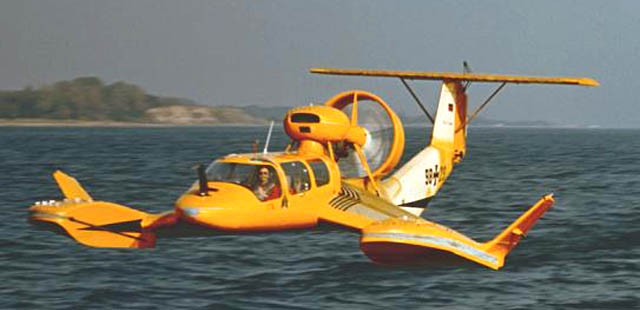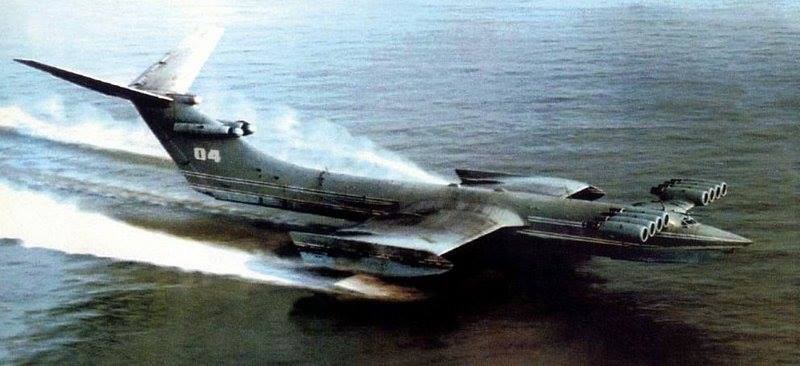
The airflow around the wing of an aircraft flying in close proximity to the ground differs greatly in comparison to the airflow around a wing of an aircraft flying at altitude. The presence of the ground creates a significant aerodynamic affect that can increase lift without a drag penalty, consequently improving the aerodynamic efficiency.
This phenomenon is known as in-ground effect and is the basis for craft known as WIG (Wing-In-Ground-effect), GEV (Ground Effect Vehicles) or by the Russian term Ekranoplan. These craft are fascinating, neither conventional aircraft nor surface vessel. They fly within metres of the surface, typically water, at speeds far exceeding those of a normal surface vessel. There are of course limitations to GEVs.

This web page primarily is concerned with the aerodynamics of GEVs through a combination of literature reviews and my personal research using CFD (computational fluid dynamics).
Latest Posts
- GEVfoil – NACA 4 Series UpdateIt’s been nearly a decade since I wrote the original NACA 4 series aerofoil script, with a ‘to-do’ that I had assumed I would address in days, not years… That post is available here: GEVfoil – NACA 4 Series I have, finally, made the small adjustments to the code to address to the ‘to-do’. Hooray,… Continue reading GEVfoil – NACA 4 Series Update
- DHMTU aerofoil implementation in GEVfoilFollowing on from the previous post, on the definition of the DHMTU aerofoil, an initial implementation of this ground-effect specific aerofoil type has been created for GEVfoil. Through the Wing In Ground Effect group on groups.io, a Matlab script was discovered. This Matlab code was created by Martin Hepperl (of JavaFoil [1] fame), in 2012.… Continue reading DHMTU aerofoil implementation in GEVfoil
- DHMTU Aerofoil DefinitionWithout doubt, the nation that has progressed ground-effect-vehicles the furthest is Russia. More specifically, this was the USSR from the 1960s through to the late 1980s with their Ekranoplan aircraft. These GEVs (Ground Effect Vehicles) were designed by the Central Hydrofoil Design Bureau, at the heart of the aerodynamic design was the Department of Hydromechanics… Continue reading DHMTU Aerofoil Definition
- Introducing GEVfoilI have decided to rename my little aerofoil project. I found no fewer than four other projects using the previous name, which I’ll avoid stating to reduce confusing search engines any further. I’ve settled on GEVfoil (Ground Effect Vehicle Aerofoil) which may seem a little obvious, but clarity should at least be in my favour.… Continue reading Introducing GEVfoil
- Ramer–Douglas–Peucker algorithmGenerally speaking, for low-speed flow around an aerofoil, the largest gradients in the flow-properties coincide with the greatest curvature of the aerofoil, and thus are the region that requires the greatest concentration of cells (or nodes) in the computational domain. Many of the simplified treatments for spacing points along an aerofoil use a logarithmic spacing… Continue reading Ramer–Douglas–Peucker algorithm
